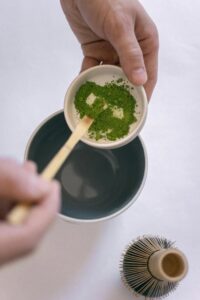 Alternatively titled “I now know why these things are so friggin expensive”. Or “Don’t try this at home if you want to keep your sanity.”
Alternatively titled “I now know why these things are so friggin expensive”. Or “Don’t try this at home if you want to keep your sanity.”
Ok, so the first alternative title is accurate, but the second is slightly a stretch of the truth. It won’t exactly make you crazy if you do this, but yes, you’d have to be nuts to repeatedly forage for pine nuts.
I’ve been procrastinating posting this piece because uhh… you’ll see why in a bit. But at the request of some of the readers, I thought I’d share with you the methodology of foraging pine nuts, adding in my less than amusing experiences (ok, they’re funny, but not when they happen to you), and little tips you can do to make it easier for you, should you be stubborn enough to try this for yourself.
 First, find a bunch of pine trees with easily accessible branches. Make sure that the branches have both opened and unopened pine cones. (If there are no open pine cones, it likely means that the pine cones on the tree aren’t yet fully ripe.) You want the closed pine cones- the open ones have already lost their nuts, and in most likelihoods, the animals have already eaten them up.
First, find a bunch of pine trees with easily accessible branches. Make sure that the branches have both opened and unopened pine cones. (If there are no open pine cones, it likely means that the pine cones on the tree aren’t yet fully ripe.) You want the closed pine cones- the open ones have already lost their nuts, and in most likelihoods, the animals have already eaten them up.
Carefully twist the closed pine cones until they come off the tree, making sure not to get sticky sap on your hands (it’s worse than super glue!), and put the pine cones all into a bag. Once your bag is full, take the lot home with you.
Pine cones are comprised of many overlapping scales. Within each scale there are one or two pine nuts, depending on the species. Heat and/or dryness causes the scales to open up, releasing the nuts within. Apparently, if you just leave your bag of pine cones alone long enough, they’ll release their nuts on their own. But no, I’m not like that. I wanted to do as much as I could, as quickly as I could.
What I did was:
(No, this is the part you absolutely should not be trying at home unless you happen to enjoy breathing in smoke for at least two weeks and potentially needing to call the fire department.)
I popped a pine cone into a container in the microwave. I didn’t believe that the heat would really cause it to open up (after all, the only information I could get out there was from ehow.com, and you can’t take their word for anything!) and I wanted to test one out quickly before I tried doing the lot.
For the first two minutes, a really relaxing pine scent perfumed my kitchen. I took out the pine cone, and- low and behold- the scales in fact did started popping open. So excited was I that I took it over to the table and used my nails to pry apart the scales the rest of the way to take out the pine nut seeds. I did that for a bit, but eventually my fingers started hurting. My nails were threatening to separate from my thumbs.
Oh yes- I exclaimed! I don’t need to work this hard. Just pop it back into the microwave for a few more minutes and it’ll open up the rest of the way. I won’t have to pry apart the scales anymore…
And that’s where I went wrong.
Less than 30 seconds later, I saw flames inside my microwave and plumes of putrid brown smoke billowing out of the top, bottom, and sides of the microwave. I opened the door as quickly as I could, took the half melted container with the burning cone inside, dumped it in the sink, and poured water on it to douse out the flames.
 |
| Opened pine cones, out of the oven. |
What remained was a hunk of plastic, some charred ashen remains of the pine cone, a house so filled with smoke that you could gag when entering, even after airing out the house for a few days. Oh, and my microwave? It’s permanently colored a putrid brown now.
Yea, don’t try this at home. Pine cones are very easily flammable!
After the initial fiasco, I was hesitant to do anything else with the rest of the cones, but I gathered up my courage, placed them in an oven tray, and popped them in the oven on 350 until they all popped open. This time I had no fires to worry about, and only the pleasantest of aromas emanated. Once all the scales opened up, I took out the lot.
 |
| Wings and seeds. |
I’ve read that each type of pine cone has different seeds, but I only have experience with the species that I picked. The seeds of the pine cones that I got were roughly the size of an orange seed, with brown and black mottled shells and brown wings. These covered the bottom of the oven tray. Prying out seeds was unnecessary for the most part- they fluttered out everywhere, onto the oven tray, table, floor, etc. They just took their merry old time. Shaking helped them get a move on.
 |
| Pine nuts in their shells. |
Eventually I figured out that I could put the lot in a big fabric shopping bag, tie it closed, and bash it against the wall repeatedly. This helped me vent my frustration, made my kids crack up, encouraged the seeds to come out of the cone, and kept the mess to the barest minimum.
Then Lee and I went through the wings, taking out the seeds, and putting them into a container. I’m not sure which the hardest part here was- picking out tiny seeds from among papery wings, or the 3 or 4 times little Ike picked up the container with all the pine nuts and spilled them all over the floor! Ok, no competition. Ike messing up the hard work wins, hands down.
Once we took out as many seeds as we had the energy to do, we set about to crack those tiny shells to get to the nut flesh inside.
Have you ever cracked sunflower seeds? These are the same idea. You do it with your teeth.
 |
| Little pine nuts. Not much bigger than sesame seeds. |
Have you ever cracked watermelon seeds? Yea, that’s more similar. Trying to deal with really small shells doesn’t make things easy.
Now these are even smaller than watermelon seeds!
Ok, and this is why I was procrastinating so much to post this post. I was hoping I’d have a container filled with shelled pine nuts to take a picture to show you the end results. Only a month later, most of the pine nuts are sitting there in their shells, and this was all I managed to get for a picture.
Yes, they’re teeny, tiny little pine nuts. From what I’ve read, there are species with much larger nuts. I don’t know. I have yet to try them.
This work is very annoying and very frustrating.
So.
Am I glad I did this? Or was it a complete waste of time?
Well, it was a waste of time. But I did gain something. I gained the knowledge that I’d rather go without pine nuts than do this again. I gained the knowledge how exactly to do this, so if I ever was in a survival situation and I needed to know how to do this, I could. I gained the information about how exactly this is done.
I gained appreciation for the harvesters of pine nuts that are sold in the stores, and now I really, truly, absolutely understand why pine nuts are outrageously priced in the stores.
Would I ever do this again?
Yes. Sort of.
My husband works in a job with lots of down time. He likes to crack and eat sunflower seeds, because it gives him something to do with his time. He’s not eating those seeds for the nourishment, rather for the activity that eating them provides. He requested that I take pine cones, roast them, and then send them along with him to work. He said he’d gladly eat these as munchies.
Hope you enjoyed hearing about my kitchen fiasco, as well as learning how to harvest pine nuts.
P.S. Edited to add- I actually managed to forage pine nuts properly and more easily. See this post on how to identify the right types of pine for foraging pine nuts, and how to forage them.
Do you ever use pine nuts in recipes? If you don’t, how do you usually replace them in recipes? How much do pine nuts cost per pound where you live?
Do pine trees grow in your area? Do you think you’d ever try doing this, or did I discourage you from even trying?
Lastly- when was the last time YOU had a fire in your kitchen, or that you filled your whole entire house with smoke? I love to hear stories!
Linking up to the Hearth and Soul blog hop, Fight Back Friday, and Pennywise Platter Thursday.





0 Responses
Great story, but pine cones open and close because of humidity , not whether or not they have nuts in them. I live in a long leaf pine forest,
Better info. Thanks. We are in Maine surrounded by pine. Gonna try next year. Thanks.